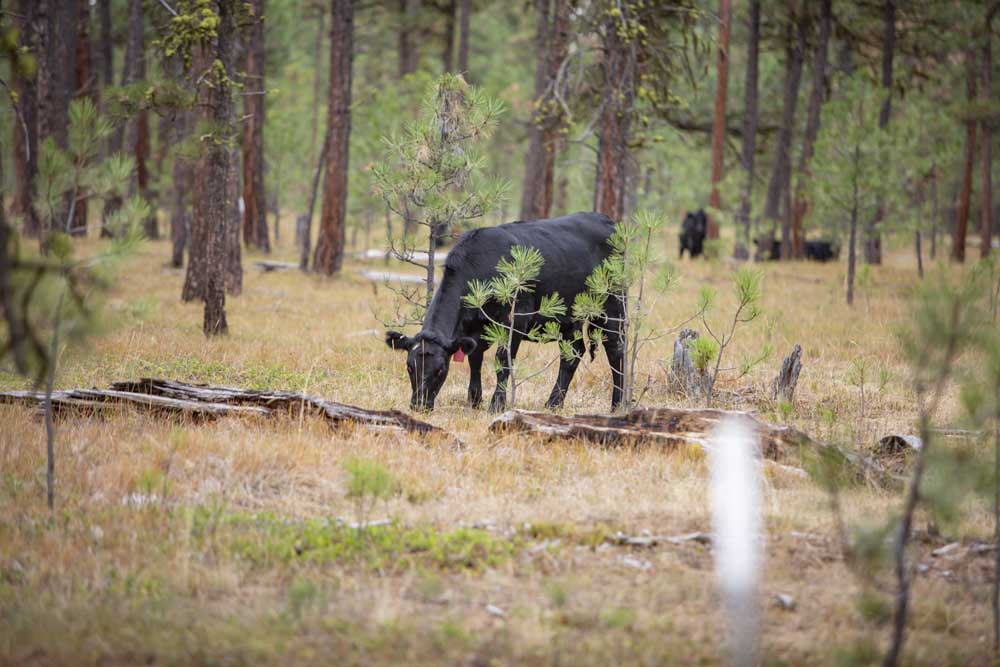Forest goals and desired conditions nearly complete
Published 12:00 pm Tuesday, May 25, 2021

- Cattle graze on the forested land along Dixie Ranch Road outside Ukiah on Sept. 18.
The Blues Intergovernmental Council has nearly completed goals and desired conditions for the landscape at the three national forests.
Trending
This information will be used to draft new forest plans for the Malheur, Umatilla and Wallowa-Whitman national forests. While the plans would not make any project-level decisions, they will establish broader guidelines for livestock grazing, timber harvest, wilderness and roads.
One notable change expected is that the U.S. Forest Service will make decisions at the supervisor level as it updates the plans, using the 2012 planning rules instead of the 1982 rules it has been using.
Craig Trulock, the supervisor of the Malheur National Forest, said each supervisor of the three national forests in Eastern Oregon and southeast Washington would sign their forest plan.
Trending
Trulock said there would likely be one analysis that would cover the three forests.
Trulock said, with decisions being made on the local level, objections would go to the regional forester in Portland, rather than Washington, D.C.
“There is going to be a much higher level of understanding of what the issues are and what the communities need,” Trulock said.
Trulock said changing from the 1982 planning rules to the more streamlined 2012 rules emphasizes guidelines instead of standards. He told the Eagle that the Forest Service could not violate a standard on a project without doing a project-specific amendment to the forest plan. With guidelines, he said if there is a specific need to do something on a project, they would not have to amend the forest plan.
“It gives us just a lot more flexibility when we’re driven by guidelines rather than standards,” he said.
Trulock said, while working under the 2012 planning rule is significant, the Forest Service will still go through the National Environmental Policy Act process in writing the forest plan revision.
Access, wilderness, habitat, and set-asides subcommittee
According to meeting notes, the access subcommittee could not agree on a list of revisions from Harney County at its April 30 meeting and decided to bring them before the June 4 meeting of the full council.
The subcommittee will meet one more time before the full meeting and hopes to have a completed draft ahead of time.
Rep. Mark Owens, R-Crane, said the group has about 70-80% of what they need to present to the full council.
“We’re trying to create something from whole cloth and trying to bring a diverse set of stakeholders along,” Owens told the Eagle. “I think we’ll get there. We need to let the process play out a little bit.”
Owens said the list of desired conditions is a “work in progress.”
Carl Scheeler, manager of the Wildlife Program for the Confederated Tribes of Umatilla Indian Reservation, told the group this is the first time that access would be a desired condition. According to the meeting notes, the group stated in the document that it would not be recommending additional set-asides.
According to the notes, the group reiterated that the forest plan does not designate motorized usage on forest roads. Instead, those provisions come from the travel management plan, and that other parts of the document would be better for those concerns.
Forest health
Grant County Commissioner Sam Palmer, a member of the forest health subcommittee, presented the group’s final draft version of its desired conditions at the council meeting on April 30.
The group’s desired conditions touched on using timber removal, where appropriate, as a resource management tool in areas deemed not suitable for timber production. According to the notes, removing timber should be a “byproduct of restoration actions.”
The group also suggested timber salvage in areas of catastrophic wildfire and that timely post-fire treatments could mitigate hazards, along with prescribed fires, fuel reduction treatments such as mechanical treatments and other fuel reduction methods.
Howard Teasley of the Nez Perce Tribe made comments on the document, according to the meeting notes. Overall, the notes read, the conditions fit within the general parameters of the tribe. However, Teasley told the group he would need to get the document approved by tribal leadership. According to the notes, the general BIC meeting’s purpose is to identify “red flags.”
Socioeconomic subcommittee
The committee is tracking data and reviewing how forest plans impact economic conditions. The group hopes to have a finalized data table to present to a general meeting of the BIC by the end of June.
What is next?
Trulock said the Forest Service would begin putting together a team to synthesize the science with the desired conditions.
“That will be working simultaneously as we move the NEPA process forward,” he said.
Owens said the group could spend time in the field looking at projects, according to the notes.
The BIC Steering Committee will develop what the next steps should be.
Continuing to build relationships
Scheeler said it is essential that the BIC continue building the relationships between federal and local governments and those between the tribes’ counties as the plan develops.
Scheeler said his biggest takeaway so far in working with the BIC is the common ground the group has found.
“When you put people with differing views in the same room and allow them to talk to one another that you can come to some common agreements,” he said. “It’s easier to vilify different issues, ideas and individuals when you don’t know them and haven’t sat down and spoken with them directly.”
“There is going to be a much higher level of understanding of what the issues are and what the communities need.”
—Craig Trulock, Malheur National Forest supervisor









